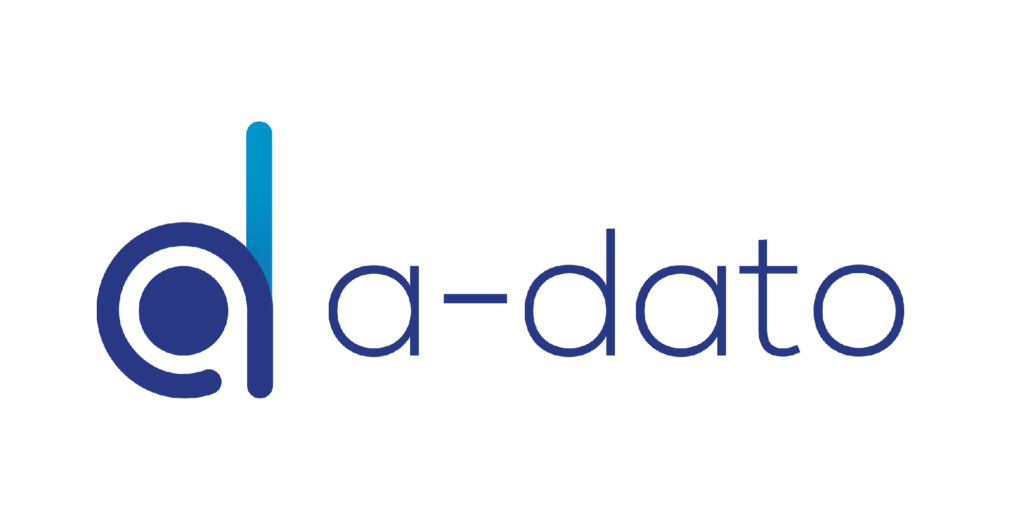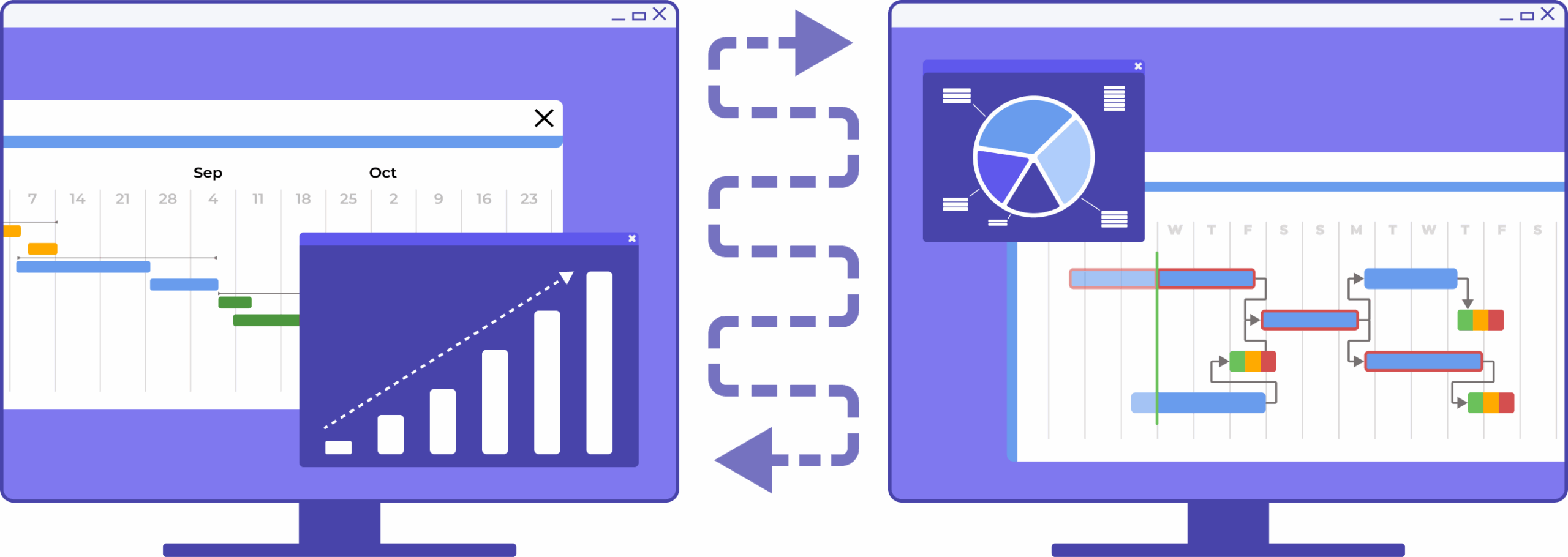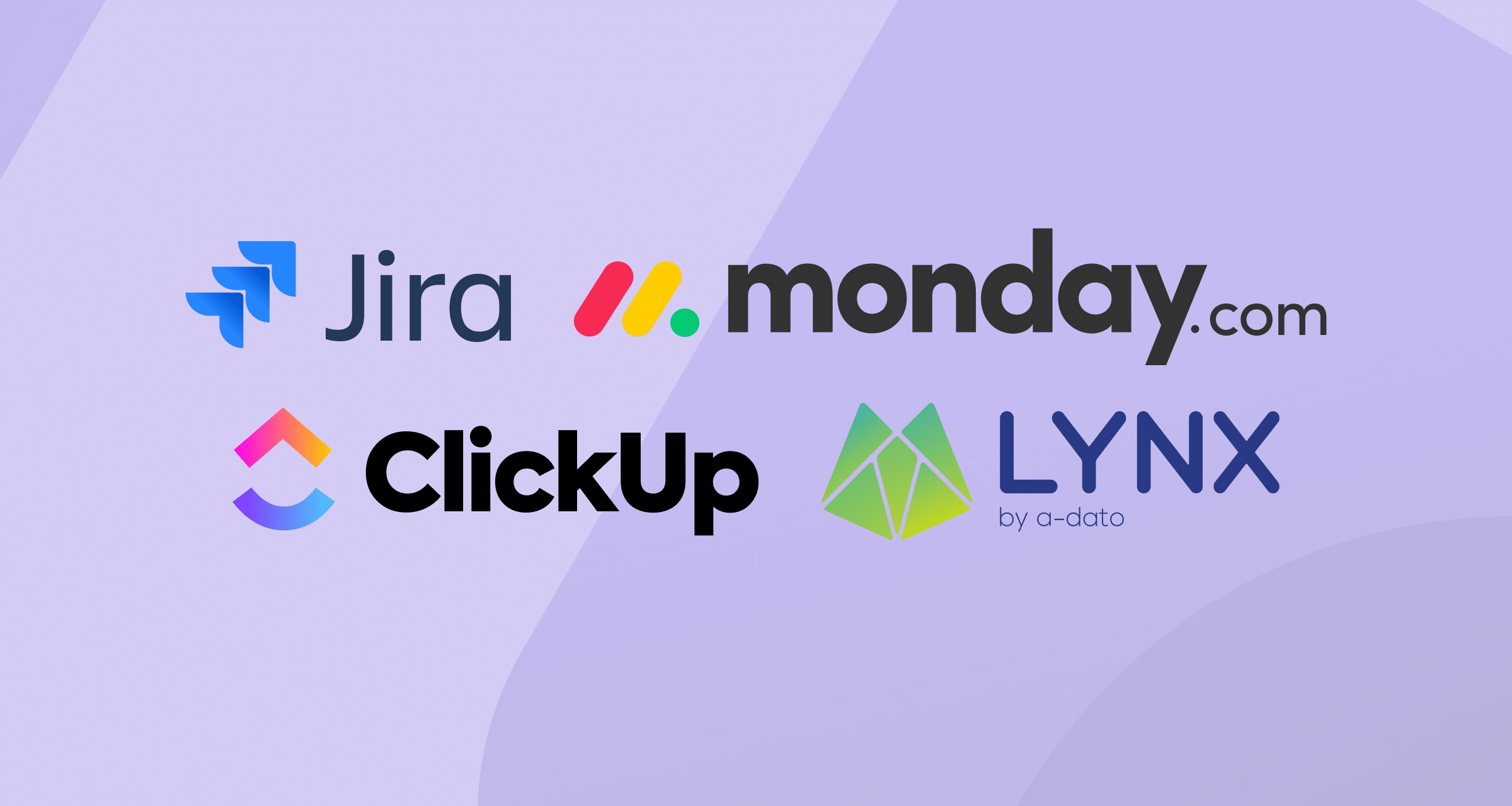In today’s fast-paced business environment, projects face constant change and uncertainty. Market conditions shift, new technologies emerge, and customer expectations evolve rapidly – often in the middle of a project. Traditional project management approaches (like the classic waterfall method) struggle to keep up when requirements or priorities change. This is where adaptive project management comes in. An adaptive approach embraces change, learning, and iteration, allowing teams to “rebuild the rails” of a project as they go rather than forcing the project to stay on a rigid plan
. The result is a more flexible way to deliver results in dynamic conditions. This high-level guide explains what adaptive project management is, how it differs from traditional methods, what research says about its effectiveness, real-world examples of it in action, and the leading tools that support adaptive workflows.
What Is Adaptive Project Management?
Adaptive project management is a flexible, responsive approach to managing projects. Instead of executing a fixed plan from start to finish, an adaptive methodology continuously learns and adjusts. As one source puts it, traditional methods try to “put the train back on the rails,” whereas adaptive management is willing to rebuild or reroute the rails mid-journey to reach the destination
. In practical terms, this means teams using an adaptive approach will work in iterative cycles, constantly gather feedback, and refine the project’s path as new information emerges.
Key characteristics of adaptive project management include:
-
Iterative Work Cycles: Work is broken into short iterations (e.g. sprints) with frequent reassessment and reprioritization. This allows for course-correcting the project at regular intervals.
-
Responsiveness to Change: Plans are expected to evolve. The team actively responds to new requirements, risks, or market changes rather than resisting them.
-
Continuous Learning: Each cycle or phase is an opportunity to learn what works and what doesn’t. Decisions are improved by incorporating lessons from earlier project stages
.
-
Ongoing Stakeholder Feedback: Adaptive projects involve stakeholders (and often end users or clients) throughout the process, ensuring the end product continuously aligns with their needs.
-
Lightweight Planning: Up-front planning is kept lean. Instead of a detailed long-term plan that might become obsolete, adaptive teams often plan just enough for the next iteration and maintain a flexible overall roadmap.
-
Empowered, Self-Organizing Teams: Team members are given autonomy to adjust their tasks and processes. They collaborate closely and solve problems together rather than strictly following top-down directives.
-
Flexible Scope: The project scope can be redefined as needed. If new high-value features are identified or if some requirements become irrelevant, the scope is adjusted on the fly (with stakeholder input) rather than locked in stone.
-
Continuous Risk Mitigation: Risks and bottlenecks are addressed proactively. For example, an adaptive approach might use buffering techniques from Critical Chain Project Management (CCPM) to absorb uncertainties
or kanban boards to spot workflow bottlenecks early.
In essence, adaptive project management equips teams to deal with change, complexity, and shifting priorities throughout the project lifecycle
. This makes it well-suited for projects where requirements are not fully clear from the start or where change is likely – which, in modern business, is the majority of projects.
Traditional vs. Adaptive Project Management
How does an adaptive approach differ from traditional project management? The differences can be significant:
-
Planning Philosophy: Traditional (or “predictive”) project management invests heavily in detailed upfront planning. Success is defined by sticking to the plan. Adaptive management, by contrast, treats the initial plan as a hypothesis to be tested and refined. The motto might be “embrace change over following a plan.” Changes aren’t viewed as failures but as new inputs to improve the project.
-
Structure of Execution: Traditional projects follow a linear, sequential flow – e.g. requirements → design → build → test → deploy – and each phase must finish before the next begins. Adaptive projects use an iterative or incremental flow, cycling through mini-phases repeatedly. For example, an agile team delivers a usable increment of the product in a short sprint, then iterates.
-
Scope and Requirements: In a traditional model (like waterfall), the scope is defined upfront and guarded via change control; changes are minimized. In an adaptive model, scope is expected to evolve. After each iteration, requirements may be re-prioritized or new features added. The project “triangle” of scope, time, and cost is managed differently – adaptive teams often fix time and cost per iteration and vary the scope as needed, whereas traditional teams fix scope and adjust time/cost to deliver it.
-
Risk Management: Traditional projects attempt to predict and prevent all risks early through detailed analysis. Adaptive projects acknowledge that not all risks can be known in advance. They mitigate risk by delivering in small increments – meaning if something goes wrong, it’s caught early (and only a small portion of work is affected). Frequent check-ins and retrospectives help surface risks or issues continuously.
-
Stakeholder Engagement: Traditional methods might engage stakeholders mainly at milestones (e.g. phase gates or final deliverable review). Adaptive methods keep stakeholders in the loop throughout – through sprint demos, weekly check-ins, or even embedding customers in the team (as in Agile product owner roles). High engagement ensures the project is always aligned with business needs.
-
Control and Governance: A traditional project manager’s role is often to direct work and control deviations from the plan. In adaptive management, the project manager (or Scrum Master / team lead in agile contexts) acts more as a facilitator, enabling the team’s self-organization and removing impediments. Governance in adaptive projects is lighter-weight, focusing on value delivered rather than strict adherence to process.
Another way to illustrate the difference: traditional PM is like following a detailed recipe, whereas adaptive PM is like improvising as a chef. The adaptive manager has the skill to adjust ingredients and techniques on the fly if something changes, rather than sticking rigidly to a cookbook
. This doesn’t mean adaptive approaches are chaotic – they are “structured and systematic” in how they learn and adapt over time
. They simply build change into the process, whereas traditional approaches try to minimize change.
When to use which? Traditional (predictive) methods still work well for highly regulated, well-understood projects – for example, constructing a building with exact specifications or repeating a routine process. Adaptive approaches shine when a project’s path can’t be fully predicted or needs to deliver value quickly and iteratively (software development, R&D, innovation projects, etc.). Many organizations today actually blend the two in a hybrid approach, using predictive techniques for some parts and adaptive techniques for others, depending on which is most appropriate.
Adaptive methods often use visual tools like kanban boards to manage work. In this example board, tasks flow through stages (To Do → In Progress → In Review → Done), and the team continuously reprioritizes and adjusts in real time. Such boards provide transparency and flexibility, helping teams respond to changes quickly.
Effectiveness and Adoption of Adaptive Methods
Over the past decade, adaptive project management – especially in the form of Agile methodologies – has moved from niche practice to mainstream. Research and statistics strongly indicate higher success rates with adaptive approaches. For instance, a broad study found that Agile projects are successful about 64% of the time, compared to only 49% for projects using a traditional waterfall approach. In other words, agile/adaptive projects deliver roughly one and a half times more often what they set out to achieve, a significant advantage.
Other compelling statistics and findings include:
-
Higher Success, Fewer Failures: Adaptive techniques not only succeed more, they also fail less. Survey data shows only 9% of agile-managed projects are deemed failures, versus 29% of waterfall projects – more than three times the failure rate for the traditional approach
. Teams using flexibility and continuous feedback can detect problems early and pivot, avoiding the large-scale failures that sometimes plague waterfall projects.
-
Organizational Adoption: A majority of organizations have embraced adaptive methods in some form. Industry surveys (such as the long-running “State of Agile” reports) show agile adoption growing from around 40% in the early 2010s to over 70% of organizations by 2022
. Another study by project management consultancy Wellingtone found about 24.6% of companies now use Agile as their primary project management practice (up from 23% in 2020), and an additional 31.5% use a hybrid approach mixing agile and traditional methods
. Especially in sectors like software and financial services, agile has become the default way of executing projects.
-
Better Business Outcomes: The impact of adaptive approaches isn’t limited to IT metrics – it translates into business results. According to a research summary by Zippia, companies report an average 60% growth in revenue and profit after adopting Agile practices. While that number may vary by context, it underscores how adapting more quickly to customer needs can improve the bottom line. Another report noted that 98% of companies say Agile helped them be more successful, which explains the enthusiasm behind its adoption.
-
Comparative Studies: Both academic and industry analyses have concluded adaptive methods outperform traditional ones on key project success criteria. The Project Management Institute’s Pulse of the Profession report found projects using agile were 28% more successful than projects using traditional techniques. Similarly, the Standish Group’s CHAOS studies have famously reported significantly higher “success” rates (on time, on budget, with expected value) for agile projects compared to waterfall. Fewer agile projects wind up “challenged” or cancelled.
-
Addressing Changing Priorities: One of the top cited benefits of going adaptive is the ability to handle changing priorities. In fact, 70% of organizations cite managing changing priorities as the leading advantage of adopting agile project management
. In a volatile business environment, this agility can be a decisive factor in a project’s relevance and value.
It’s important to note that despite these benefits, not every organization has gone fully agile or adaptive. Some industries with high compliance demands (government, construction, etc.) still rely heavily on traditional methods, or they adopt a hybrid model. However, the trend is clear: the pressure for speed and flexibility is pushing more teams toward adaptive project management. Gartner forecasts that by 2024, 80% of digital businesses will have integrated adaptive project management and reporting technologies (alongside strategic portfolio management) to drive better outcomes
. In short, adaptability is becoming a critical competency for project success in the modern era.
Real-World Examples of Adaptive Project Management in Action
Adaptive project management isn’t just theory – many organizations have put it into practice with impressive results. Below are a few real-world examples and case studies that demonstrate how embracing an adaptive approach can pay off:
-
Industrial Manufacturing (Endress+Hauser): Endress+Hauser, a global industrial instrumentation manufacturer, implemented an adaptive project management approach using Theory of Constraints and Critical Chain Project Management. The results were striking – they tripled their project throughput with the same resources, far exceeding their expectations. As their Managing Director put it, “That is more successful than anything we ever wanted from this change process. A huge surprise.”
. By focusing on bottlenecks and adapting schedules dynamically (with the help of specialized software), the company dramatically accelerated project delivery.
-
Technology & Engineering (SICK AG): SICK, a leading sensor technology company, adopted adaptive project portfolio management to handle more projects concurrently. Through better resource allocation and iterative planning, SICK achieved 20% more throughput (projects completed) with the same number of employees after the change
. According to their project management office, they “more than achieved” their goals by moving away from rigid plans and allowing more fluid prioritization – effectively doing more in less time by staying adaptable.
-
Aerospace R&D (Diamond Aircraft): Diamond Aircraft, an aerospace manufacturer, needed to keep innovation moving even when teams went remote. By using an adaptive workflow tool (Lynx TameFlow) that provided real-time visibility into tasks, their engineers maintained high productivity. Employees reported that even during weeks of home-office work, “it was always clear what to do after a look in Lynx… It would have been much more difficult to get a full workload without a program like that.”
. This underscores how adaptive project tools can guide teams through uncertainty (like sudden remote work shifts) by clearly indicating priorities and next steps. The same company also noted that such a tool “helps to increase the output…and keep the output high during times where direct coordination is reduced”
. In other words, adaptivity in project management can safeguard productivity when normal processes are disrupted.
-
Software and Tech (Spotify): The music streaming giant Spotify famously pioneered its own adaptive agile model (the “Spotify model” of squads, chapters, tribes). This approach allowed Spotify to continuously deploy new features and scale its teams rapidly without losing agility. Companies like Spotify and Netflix became “poster children” for Agile, proving that even at large scale, an adaptive approach could outperform the old ways
. Their success in delivering innovations quickly and responding to user data in near real-time has inspired many others to follow suit.
-
Environmental Engineering Projects: Adaptive project management isn’t limited to IT – even large-scale engineering and environmental projects use it. The concept of adaptive management actually originated in the 1970s in ecological projects (Holling & Walters’ work on fisheries) as a “learning by doing” method
. Today, many big environmental engineering initiatives employ adaptive frameworks to iteratively design, implement, and refine solutions for complex problems. For example, teams might adjust their project strategy season by season based on what’s working in the field – a stark departure from the old static project plans.
These examples demonstrate a common theme: organizations that embrace adaptive project management can achieve faster throughput, higher quality, and greater resilience to change. Whether it’s manufacturing, tech, or large infrastructure projects, the ability to pivot and continuously improve leads to better outcomes. Of course, success also depends on leadership support and the right tools – which brings us to the next section.
Conclusion
Adaptive project management represents a fundamental shift in how projects are run – from “plan the work and work the plan” to “plan, do, learn, adapt, and iterate.” For corporate teams, this shift can be challenging but incredibly rewarding. It enables faster delivery of value, better alignment with customer needs, and improved risk management in an unpredictable world. As we’ve seen, current research backs up the benefits: higher success rates, fewer failures, and greater organizational agility. Real companies across industries have demonstrated that adaptive approaches can lead to dramatic improvements in throughput and responsiveness.
The path to becoming adaptive often involves cultural change (encouraging flexibility and learning), process change (adopting Agile, CCPM, or hybrid frameworks), and leveraging the right tools. Fortunately, today’s project management software is rising to the occasion – from comprehensive platforms like Planview and Planisware that support adaptive portfolio governance, to specialized tools like Lynx and Allex that help manage complexity and constraints, to user-friendly work management like monday.com that empower teams to customize their workflows. These solutions make it easier for organizations to implement adaptive project management at scale, with features for real-time collaboration and intelligent scheduling that were unimaginable in the old era of static Gantt charts.
In the end, adaptive project management is about staying resilient and customer-focused. It’s a recognition that change is not the enemy of a project – it’s a natural part of it. By adopting an adaptive mindset and equipping teams with supportive practices and tools, companies can navigate the twists and turns of projects with confidence. They can deliver results not just according to a plan, but according to what the business and end-users truly need as things evolve. For any organization looking to improve its project success and thrive amid uncertainty, it’s time to consider making the leap from the traditional to the adaptive. Your projects (and your stakeholders) will thank you for it.
Sources: The insights and data in this guide are supported by industry research and case studies, including Gartner forecasts
, Project Management Institute reports
, agile adoption surveys
, and real-world company results
, among others, as cited throughout the text. These references reinforce the value of adaptive project management and highlight the experiences of organizations that have embraced it.











